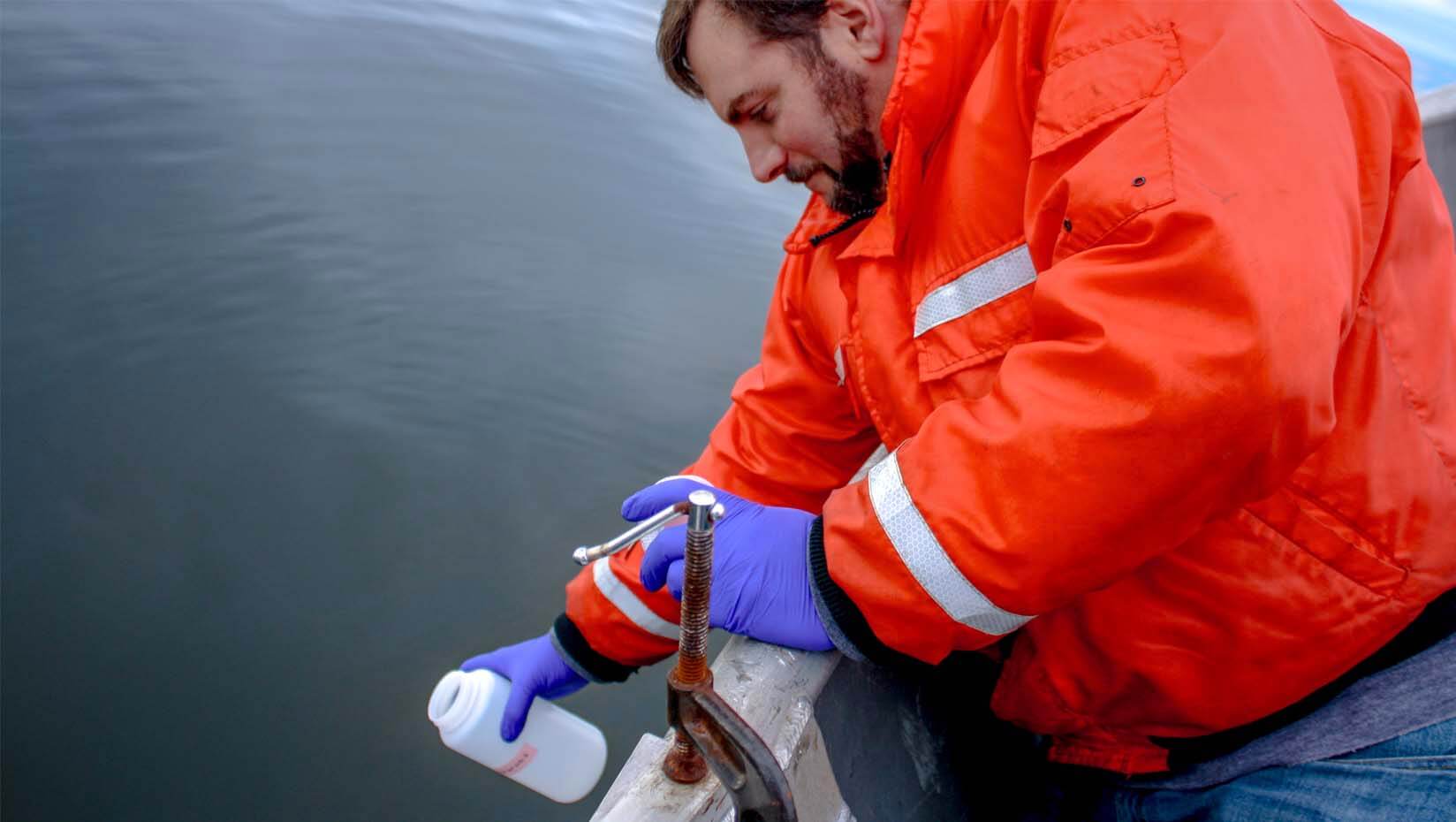
UMaine scientists use eDNA to enhance river herring recovery research in Penobscot River
University of Maine researchers are seeking to gain more insight into river herring recovery in the Penobscot River using a novel surveying tool: environmental DNA (eDNA).
eDNA is the genetic material shed by all organisms in the environment, which can be collected and sequenced. By testing its viability as a survey tool, UMaine researchers and their colleagues hope eDNA can be an asset to managers of Maine’s natural resources.
When they received a grant of $19,847 from the Maine Outdoor Heritage Fund (MOHF) in 2021, UMaine researchers, led by principal investigator Kristina Cammen and Ph.D. candidate Julia Sunnarborg, partnered with the Maine Department of Marine Resources (DMR), Maine Sea Grant and the National Oceanic and Atmospheric Administration (NOAA) to expand our understanding of river herring recovery and broader ecosystem dynamics in the Penobscot River estuary.
River herring (alewife and blueback herring) are anadromous fish with historical, ecological and cultural significance in Maine.
“Their populations declined in past centuries due to dam construction, which limited access to and fragmented historical spawning grounds,” Sunnarborg says. “The recent removal of dams and construction of fishways and other infrastructure, however, has led to the start of their recovery.”
Cammen, a UMaine associate professor of marine mammal science, is excited to test the potential of eDNA for ecosystem monitoring in a highly dynamic system.
“eDNA is a new technology that has the potential to be an incredibly powerful tool,” she said. “In the Penobscot River Estuary, where the ocean and river meet, eDNA may be able to help measure aspects of ecosystem recovery that are more challenging to assess using traditional methods.”
Researchers collected water samples containing eDNA up and down the Penobscot River during the spring, summer and fall of 2021 and 2022. This sampling design allows them to understand both ecosystem and species-specific dynamics, like changes in what fish species are present throughout the year or when river herring begin and end their migration in the river.
This novel survey tool complements the hydroacoustic surveys conducted by Maine Sea Grant and NOAA to research river herring recovery in the Penobscot River. These surveys count fish using technology similar to fish finders. While they have shown an increase in fish populations as restoration proceeds, they cannot determine the species that are present in the river at any given time. The inclusion of eDNA methods through this project is helping expand that.
“The combination of our hydroacoustic surveys and eDNA sampling offers us details that are difficult and costly to obtain with traditional techniques like trawling,” says Maine Sea Grant researcher Justin Stevens. “With eDNA, we have been able to add valuable detail to the hydroacoustic data. eDNA lets us disentangle the complex patterns of migration for diverse fish species that can otherwise mask increases in river herring numbers in our hydroacoustic data.”
With this pilot project, which concludes at the end of the year, researchers have demonstrated the viability of eDNA as a survey method for the Penobscot River, detecting a wide diversity of species and bringing new elements to ongoing hydroacoustic surveys. This work provides researchers, natural resources managers and other stakeholders new tools to ask questions and better understand one of the state’s most important estuaries.
This project was funded in part by MOHF, in which proceeds from the sale of a dedicated instant lottery ticket, currently PictureME, are used to support outdoor recreation and natural resource conservation. For more information about MOHF, visit maine.gov/ifw/mohf.
Contact: Daniel Timmermann, daniel.timmermann@maine.edu
